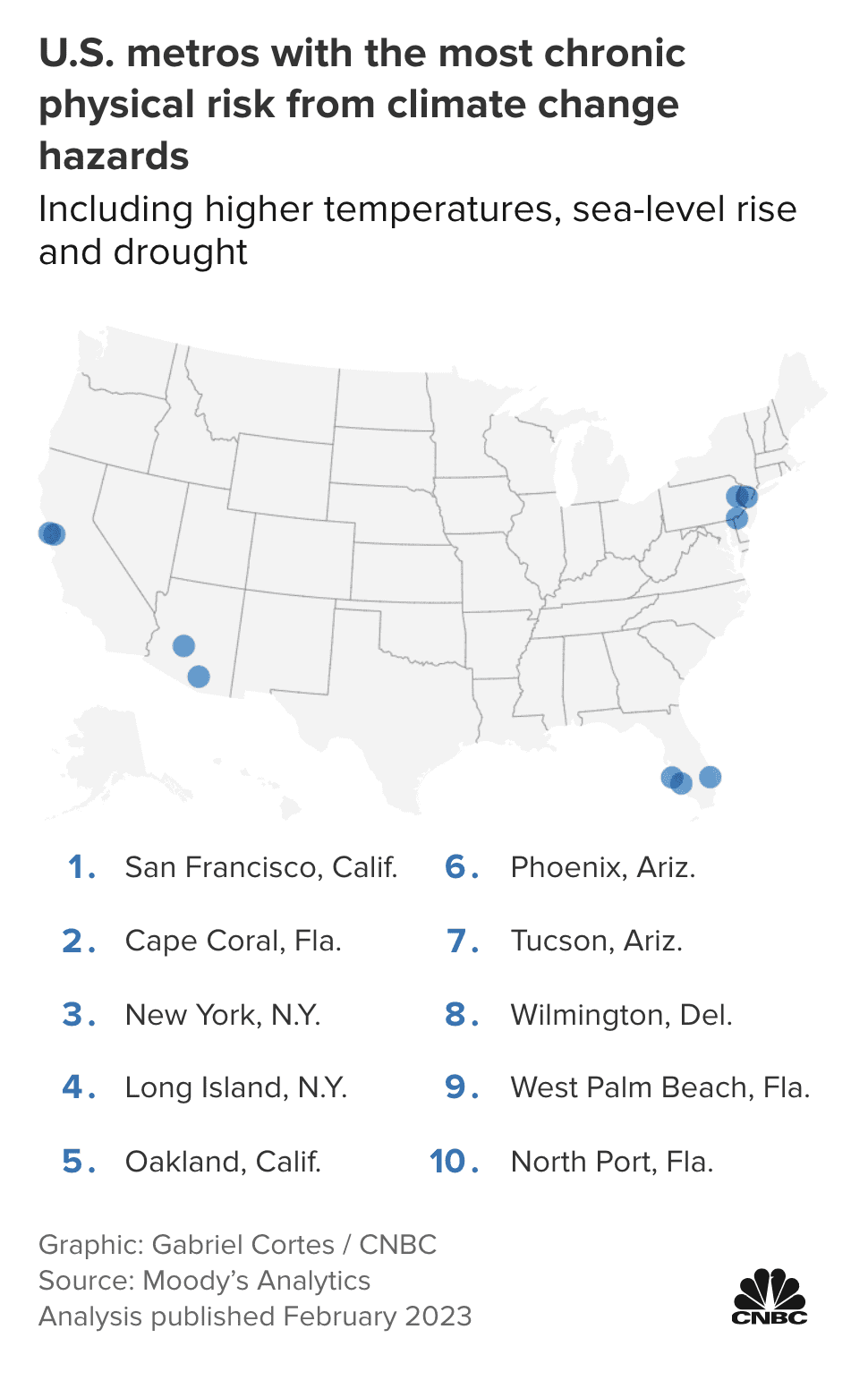
- Climate change poses a significant threat to the economies of U.S. cities, with metro areas like San Francisco, New York City and Phoenix among the most at risk of sea-level rise, extreme heat and water stress, according to a Moody's Analytics report.
- The report calculates its forecasts based on two different risk categories — the long-term exposure to drought, extreme heat and sea-level rise as well as the short-term exposure to hurricanes, wildfires and floods.
- "Absent policy changes, large coastal states like California, Florida and New York are especially vulnerable, while more inland northern economies will emerge only slightly worse off," wrote Adam Kamins, senior director at Moody's.
Climate change poses a significant threat to the economies of U.S. cities, with metro areas like San Francisco, New York City and Phoenix among the most at risk of sea-level rise, extreme heat and water stress, according to a new report by Moody's Analytics.
The report, which assesses which cities are most vulnerable or resilient to climate change, calculates its forecasts based on two different risk categories — the long-term exposure to drought, extreme heat and sea-level rise, and the short-term exposure to hurricanes, wildfires and floods.
"Absent policy changes, large coastal states like California, Florida and New York are especially vulnerable, while more inland northern economies will emerge only slightly worse off, with a handful of small metro areas possibly benefiting slightly," wrote Adam Kamins, senior director at Moody's and author of the report.
Among the metro areas that are the worst off are San Francisco, California; Cape Coral, Florida; New York City, New York; Long Island, New York; Oakland, California; and Phoenix, Arizona, the report found.

San Francisco is not especially susceptible to any one hazard, but above-average risk from each category makes it the single-most exposed large metro area, the report said.
Money Report
New York City is particularly vulnerable to significant losses from sea-level rise. Manhattan is surrounded by water and frequent flooding could "prove crippling to an economy where much activity — and the ability to travel — is tied to low-lying land or subway tunnels," the report said.
In Phoenix and Tucson, Arizona, elevated water stress makes them among the most susceptible to chronic climate risk, even though their inland locations make them immune to sea-level rise. Other western states like New Mexico and Utah will also endure water stress as drought conditions worsen.
THE U.S. metros that are least exposed to extreme heat, sea-level rise and drought include Baton Rouge, Louisiana; Detroit, Michigan; Knoxville, Tennessee; Warren, Michigan; and Dayton, Ohio.
Baton Rouge is one of the most climate-resilient areas because it has greater access to fresh water and is not exposed sea-level rise, even though Louisiana as a whole is grappling with more severe and frequent climate disasters like hurricanes.






